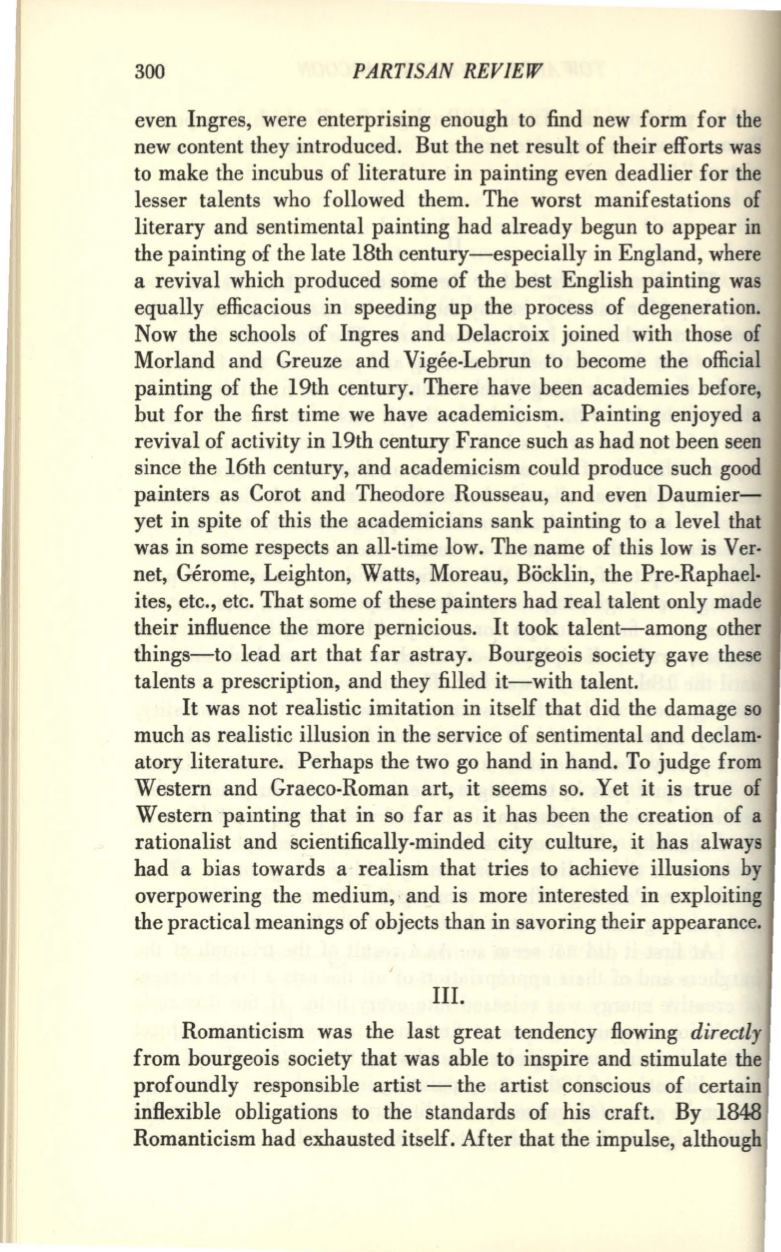
300
PARTISAN REVIEW
even Ingres, were enterprising enough to find new form for the
new content they introduced. But the net result of their efforts was
to make the incubus of literature in painting even deadlier for the
lesser talents who followed them. The worst manifestations of
literary and sentimental painting had already begun to appear in
the painting of the late 18th century-especially in England, where
a revival which produced some of the best English painting was
equally efficacious in speeding up the process of degeneration.
Now the schools of Ingres and Delacroix joined with those of
Morland and Greuze and Vigee-Lebrun to become the official
painting of the 19th century. There have been academies before,
but for the first time we have academicism. Painting enjoyed a
revival of activity in 19th century France such as had not been seen
since the 16th century, and academicism could produce such good
painters as Corot and Theodore Rousseau, and even Daumier–
yet in spite of this the academicians sank painting to a level that
was in some respects an all-time low. The name of this low is Ver–
net, Gerome, Leighton, Watts, Moreau, Bocklin, the Pre-Raphael–
ites, etc., etc. That some of these painters had real talent only made
their influence the more pernicious. It took talent-among other
things-to lead art that far astray. Bourgeois society gave these
talents a prescription, and they filled it-with talent.
It was not realistic imitation in itself that did the damage so
much as realistic illusion in the service of sentimental and declam–
atory literature. Perhaps the two go hand in hand. To judge from
Western and Graeco-Roman art, it seems so. Yet it is true of
Western painting that in so far as it has been the creation of a
rationalist and scientifically-minded city culture, it has always
had a bias towards a realism that tries to achieve illusions by
overpowering the medium, and is more interested in exploiting
the practical meanings of objects than in savoring their appearance.
Ill.
Romanticism was the last great tendency flowing
directly
from bourgeois society that was able to inspire and stimulate the
profoundly responsible artist- the artist conscious of certain
inflexible obligations to the standards of his craft. By 1848
Romanticism had exhausted itself. After that the impulse, although


